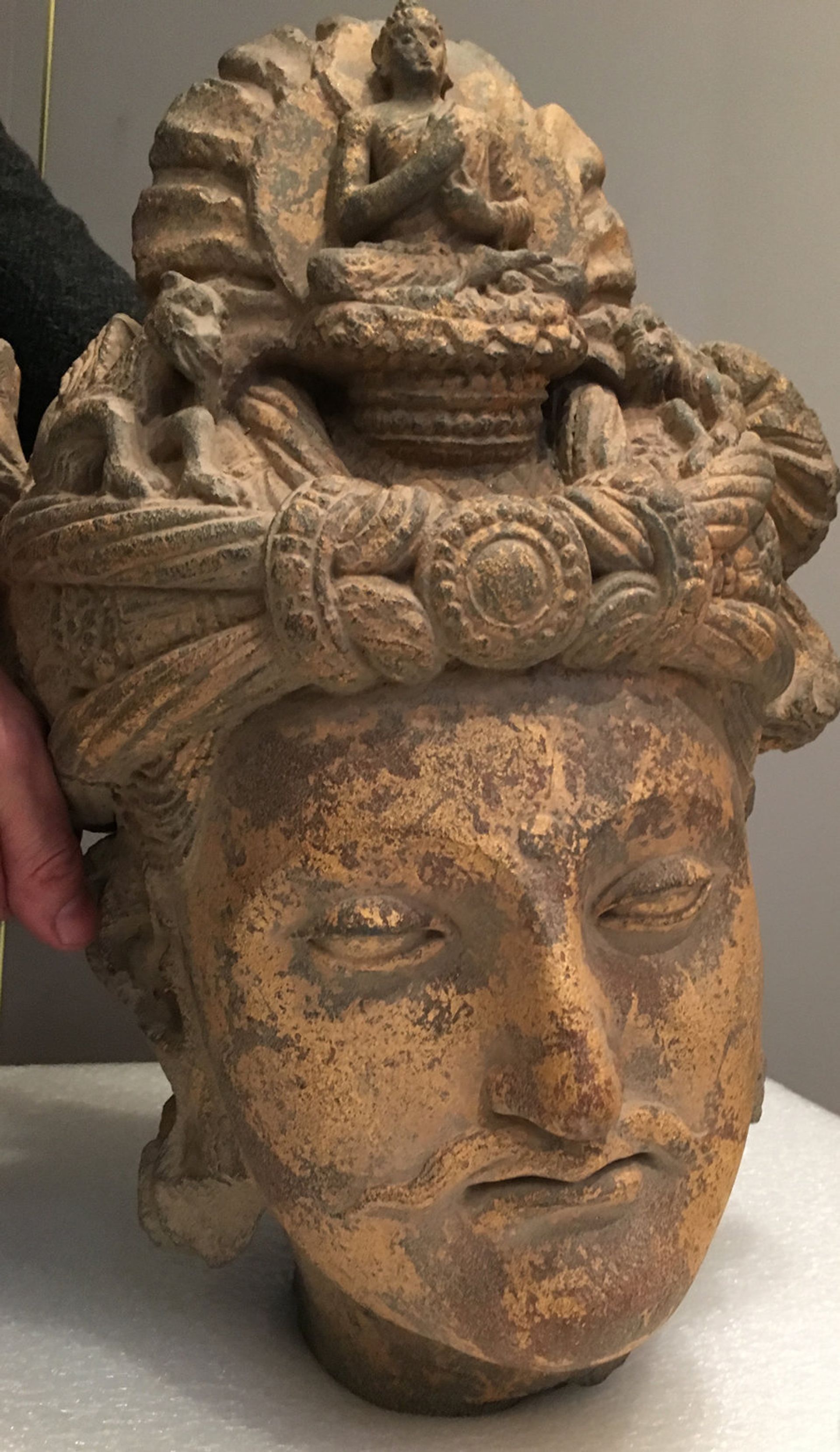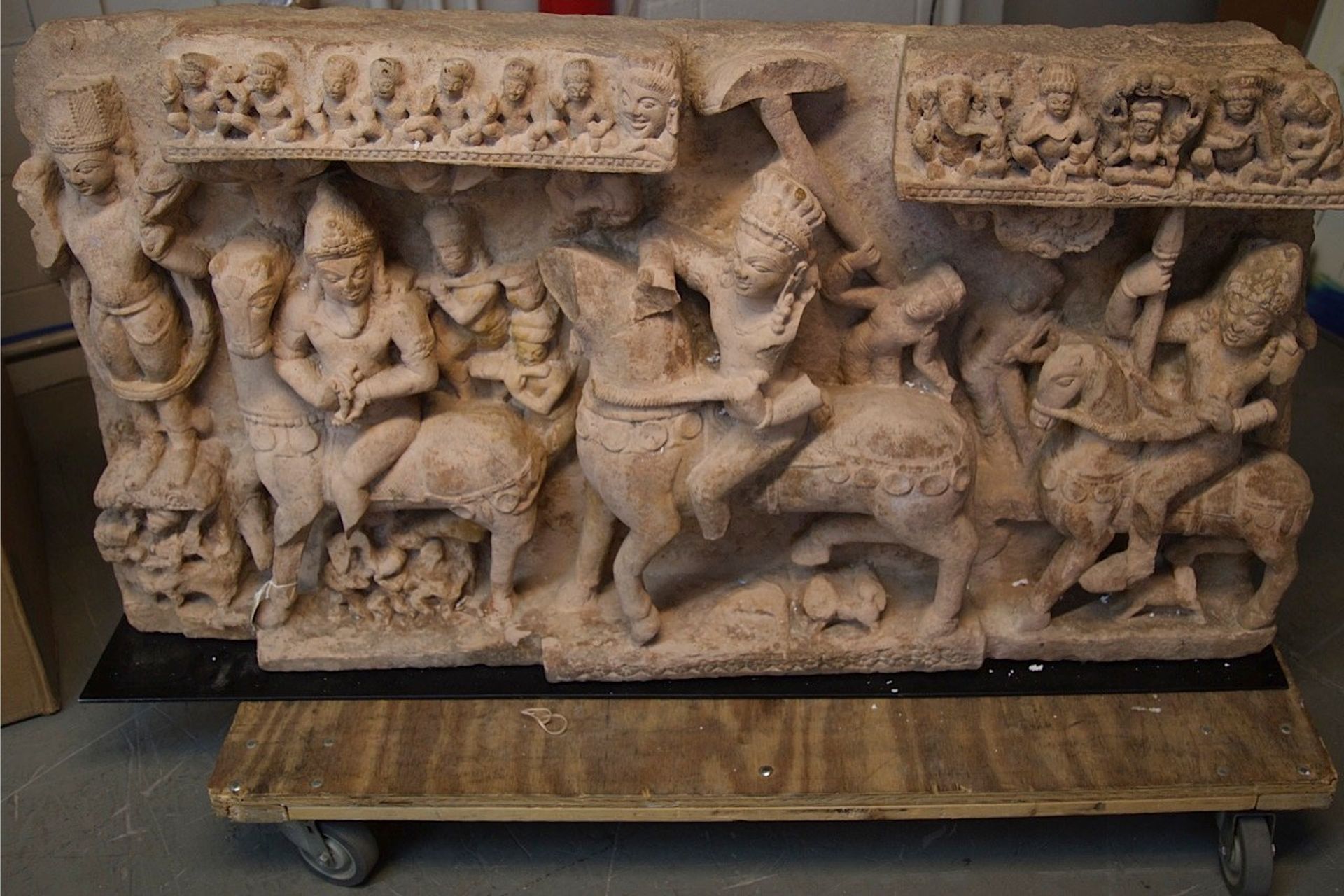Update: Federal agents seized a fourth sculpture that had been exhibited for sale during New York's Asia Week. An eighth-century Afghan marble sculpture of the Hindu deities Shiva and Parvati, seated on a tiger skin, was removed from a gallery on East 67th Street, the New York Times reports. It is the latest in a string seizures this week related to Operation Hidden Idol, an initiative run by Manhattan prosecutors and US customs authorities seeking to recover objects taken from Asia's temples and ancient sites.
On Tuesday, 15 March, agents from US Immigration and Customs Enforcement Homeland Security Investigations and officers from Customs and Border Protection seized a second-century Gandharan Bodhisattva schist head en route to an unidentified "East Coast auction house" that was due to sell the artefact in New York.

According to a statement released by investigators: "With Asia Week in New York beginning Tuesday, [customs officials] have been on the lookout for shipments coming in from shippers and sources that might be trying to exploit our border controls. This shipment contained some of the red flags authorities look for. It had multiple false statements and it is anticipated that the parties involved will be further investigated."
US federal agents seized two Indian sandstone sculptures that are linked to the dealer Subhash Kapoor from Christie’s auction house in New York on 11 March. Both works were due to be included in the 15 March sale of the Lahiri Collection of Indian and Himalayan art. Christie’s says that it had no knowledge that the works were stolen, the New York Times reports.
One sculpture depicts the Indian deity Rishabhanata (tenth century AD, est $100,000-$150,000), and the other panel depicts the deity Rivanta and his entourage (eight century AD, est $200,000-$300,000). The auction catalogue says that both works were acquired in London by 1999, one from an undisclosed collector and one from the British collectables house Spink & Son Ltd.


